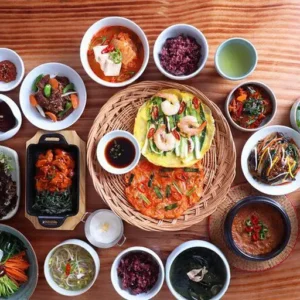If you’re planning a trip to the world’s happiest country but still have no clear idea about Bhutan’s transportation system or how to get around, this guide will help you discover the most common ways to travel when visiting this fascinating Himalayan kingdom.
For most international travelers, the primary modes of transportation are airplanes and cars. Cars usually come with a dedicated driver who ensures timely pick-up and drop-off. However, if you want to explore the charming streets of Bhutan on your own, here are some transportation options to consider.
Transportation Options for Tourists
1. Buses
Buses are one of the more affordable and eco-friendly public transportation options for travelers. While they are a great way to travel sustainably and mingle with locals, Bhutan’s bus system works a bit differently than in many other countries.
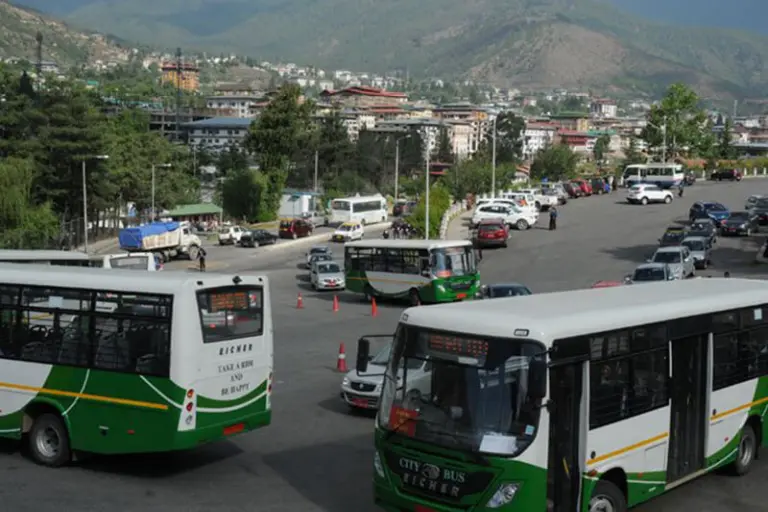
>> Transportation in Bhutan – The country without traffic lights
Buses here are often crowded and noisy, mainly catering to local passengers. Unlike other places where buses run frequently and have fixed schedules, Bhutan’s buses operate less often, with limited routes. Tickets are usually booked in advance by locals, making it harder for tourists to secure seats. Newer and more comfortable buses cost about 50% more than smaller, standard ones.
From Thimphu, buses run at least once a day to Phuentsholing, Haa, Paro, and Punakha. Long-distance routes to Zhemgang, Samtse, Trashi Yangtse, Mongar, Phobjika, and Trashigang operate one to three times per week. While fares are cheap, the schedule can be inconvenient, and seating isn’t always comfortable.
2. Taxis
Taxis are plentiful in Phuentsholing, Paro, Jakar, and Thimphu. Although most taxis have meters, drivers rarely use them. For long-distance trips, fares are usually fixed and non-negotiable, and some drivers may charge higher rates to tourists — one of the few downsides of traveling in Bhutan.
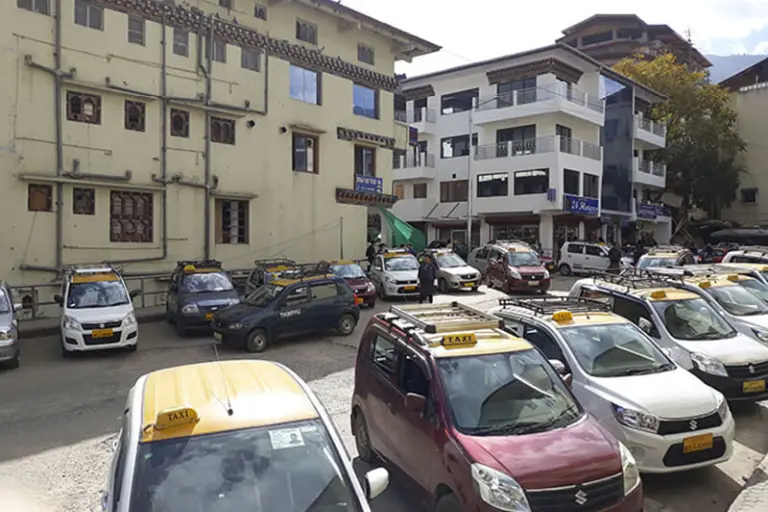
For short rides within a town, fares average around 70 Nu. Full-day hires range from 1,000 to 1,500 Nu. If you’re traveling between regions, it can be cheaper to hire a driver from a different area, as they may be more open to negotiation.
3. Road Travel
Bhutan has no passenger railways, so the only way to see the countryside is by road or on foot. The country’s traffic style matches its overall lifestyle — slow and relaxed.
There is one main highway running across mountains, over suspension bridges, and along cliff edges. Landslides or snow can block the roads, sometimes for hours or even days. If you’re visiting during June to August, it’s a good idea to carry water and snacks in case you’re stuck waiting for the road to clear.
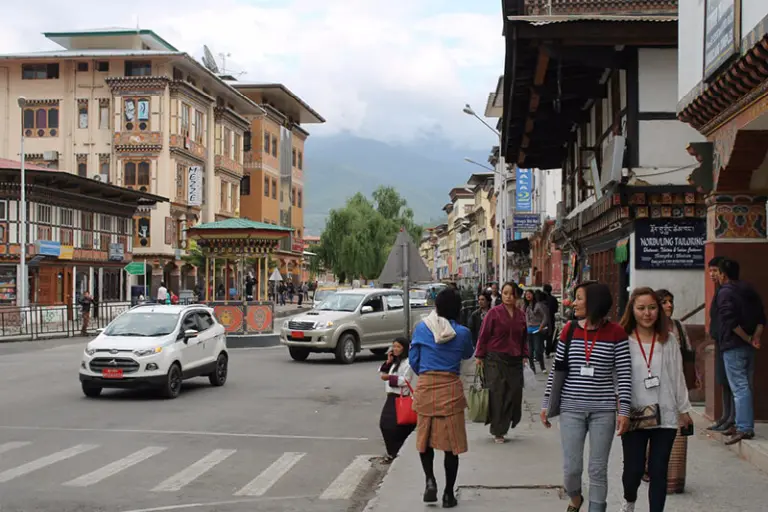
>> What to know before visiting Bhutan – Dos & Don’ts
In addition to cars and buses, travelers in mountainous regions may also encounter horses used for trekking or transporting gear. These are mostly used by hikers and always come at an extra fee.
If you’re on a guided tour, all transportation costs — for both short and long journeys — are included in the package. Because vehicles are usually provided by travel agencies, most tourists in Bhutan don’t need to worry about driving themselves. For independent travelers, hiring a car with a driver or using taxis is still recommended due to the country’s challenging mountain roads.
4. Air Travel
Domestic air services in Bhutan are limited. Airports have been developed at Yongphula (South of Trashigang), Gelephu (Southern Bhutan, near the Indian border), and Bathpalathang/Jakar (Bumthang, Central Bhutan). Currently, only Druk Air offers scheduled domestic flights from Paro to Bathpalathang, via Gelephu twice a week.
Still, road travel remains more popular for in-country transportation.
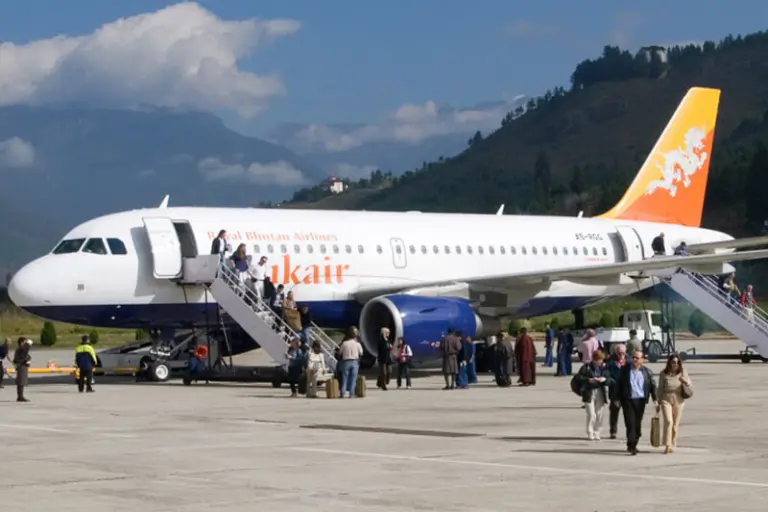
5. Cycling
Bhutan’s dramatic mountain scenery attracts adventure cyclists. Some travelers bring their own mountain bikes, while others rent them locally. There are several bike rental shops, but it’s best to arrange rentals through a travel agency before arriving.
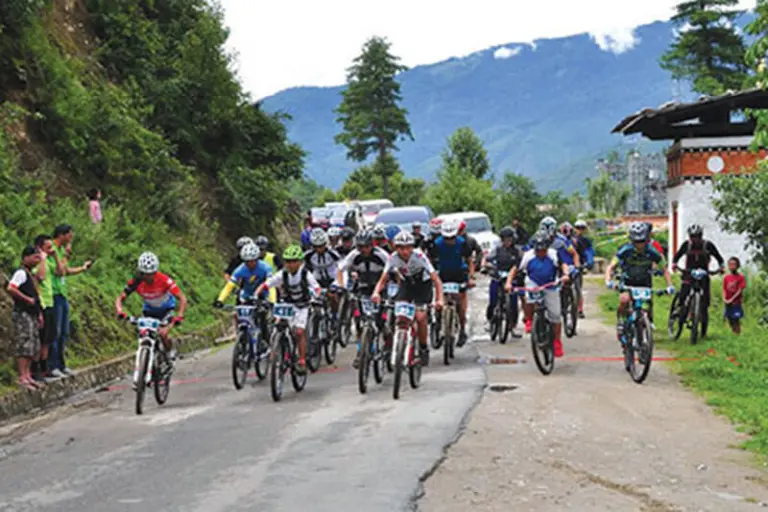
>> Bhutan weather – The best time to visit the land of the Thunder Dragon
Summary of Getting Around Bhutan
Bhutan offers a range of transportation options for travelers, from buses and taxis to private cars, bikes, and even horses in the mountains. For the most comfortable and hassle-free experience, private cars provided by tour operators — complete with a driver — are the best choice.
For sightseeing nearby, walking is a great option, as long as you follow Bhutan’s traffic rules: drive and walk on the left-hand side and use designated pedestrian paths.
If using taxis, keep your hotel address handy (written down or photographed) to show drivers. Taxis are best for short distances due to cost.
In short, whether you prefer the scenic leisure of a bus ride, the convenience of a taxi, or the adventure of cycling through mountain passes, Bhutan’s transportation offers something for every type of traveler.




